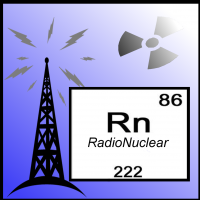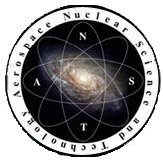A message from Goodway Technologies
Optimizing Maintenance Strategies in Power Generation: Embracing Predictive and Preventive Approaches

A message from Goodway Technologies
Optimizing Maintenance Strategies in Power Generation: Embracing Predictive and Preventive Approaches
Nuclear energy has played a key supporting role in historic missions to Mars, Pluto, and across the Solar System for the last 50 years. On January 1 2019, the nuclear-powered New Horizons flew by the most distant object ever observed up close - Ultima Thule, after it having already flown by Pluto in 2015.
 Welcome to the New Year! Even though I am on the road, there is just so much happening lately in nuclear I could not pass up the opportunity to talk about it! This episode of RadioNuclear, we take a look at recent and exciting legislation and policy for advanced nuclear. This includes the passages of the NEIMA and NEICA bills and what the Idaho National Laboratory may look like in the coming years. We also discuss the NRC's recent decision on post Fukushima regulation. Lastly, we look on how you can adopt a dog from the Chernobyl exclusion zone. No, I am not making that up!
Welcome to the New Year! Even though I am on the road, there is just so much happening lately in nuclear I could not pass up the opportunity to talk about it! This episode of RadioNuclear, we take a look at recent and exciting legislation and policy for advanced nuclear. This includes the passages of the NEIMA and NEICA bills and what the Idaho National Laboratory may look like in the coming years. We also discuss the NRC's recent decision on post Fukushima regulation. Lastly, we look on how you can adopt a dog from the Chernobyl exclusion zone. No, I am not making that up!
 ANS member Dr. Christopher Morrison was a recent guest on The Space Show. Dr. Morrison covered space radiation, lifetime radiation limitations, legal limits, rodent GCR and radiation experimentation, terrestrial radiation simulations, space nuclear power & propulsion, super-cooling conductivity.
ANS member Dr. Christopher Morrison was a recent guest on The Space Show. Dr. Morrison covered space radiation, lifetime radiation limitations, legal limits, rodent GCR and radiation experimentation, terrestrial radiation simulations, space nuclear power & propulsion, super-cooling conductivity.
On Episode 12 of RadioNuclear, we discuss how fear-mongering stories about nuclear power plants in the path of a hurricane are irrelevant, the Oyster Creek Shutdown, and lastly, how nuclear power should be used geopolitically.
A quick note of congratulations to NASA's Mars Curiosity rover project team on the first anniversary of a daredevil landing on Mars on August 6, 2012.
NASA scientist Dr. Pushker Kharecha and Dr. James Hansen (the leading climate scientist in the US) recently authored a study which conservatively estimates nuclear power has saved 1.8 million lives, which otherwise would have been lost due to fossil fuel pollution and associated causes, since 1971.
 Cassini-Huygens is a Flagship-class NASA-ESA-ASI robotic spacecraft sent to the Saturn system. It has studied the planet and its many natural satellites since its arrival there in 2004, as well as observing Jupiter and the Heliosphere, and testing the theory of relativity. Launched in 1997 after nearly two decades of gestation, it includes a Saturn orbiter Cassini and an atmospheric probe/lander Huygens that landed in 2005 on the moon Titan. Cassini is the fourth space probe to visit Saturn and the first to enter orbit, and its mission is ongoing as of 2013. It is powered by a plutonium power source, and has facilitated many landmark scientific discoveries in its mission to the stars.
Cassini-Huygens is a Flagship-class NASA-ESA-ASI robotic spacecraft sent to the Saturn system. It has studied the planet and its many natural satellites since its arrival there in 2004, as well as observing Jupiter and the Heliosphere, and testing the theory of relativity. Launched in 1997 after nearly two decades of gestation, it includes a Saturn orbiter Cassini and an atmospheric probe/lander Huygens that landed in 2005 on the moon Titan. Cassini is the fourth space probe to visit Saturn and the first to enter orbit, and its mission is ongoing as of 2013. It is powered by a plutonium power source, and has facilitated many landmark scientific discoveries in its mission to the stars.
The ANS Nuclear Cafe today brings faithful viewers a short interview with Dr. Joseph M. Zawodny, senior research scientist at NASA Langley Research Center. Zawodny discusses research on "Low Energy Nuclear Reactions" at NASA Langley, and the incredible potential of this new form of nuclear power-IF theory is validated by experimental results.
 The 2013 ANS Topical Meeting on Nuclear and Emerging Technologies for Space (NETS 2013) will be held February 25-28, 2013, at the Albuquerque Marriott in Albuquerque, New Mexico.
The 2013 ANS Topical Meeting on Nuclear and Emerging Technologies for Space (NETS 2013) will be held February 25-28, 2013, at the Albuquerque Marriott in Albuquerque, New Mexico.
A joint Department of Energy and NASA team has demonstrated a simple, robust fission reactor prototype [note: see Comments for more accurate and complete description] intended for development for future space exploration missions. The DUFF (Demonstration Using Flattop Fissions) experiment represents the first demonstration in the United State-since 1965-of a space nuclear reactor system to produce electricity.
NASA's Radiation Belt Storm Probes mission is scheduled for launch early on Thursday morning, August 30. How and why? An ANS Nuclear Cafe double feature matinee:
February 25-28, 2013 • Albuquerque Marriott, N.M.
Even before its successful landing earlier this week, NASA's Mars Science Laboratory was already sending back important scientific data-about the radiation exposure that astronauts might face during a mission to the Red Planet.
The nuclear-powered roving robotic laboratory Curiosity touched down early on August 6, and is beaming back images while undergoing system checks. The Curiosity landing has generated worldwide interest, including interest in its plutonium power source.
Early on Monday morning (1:31AM Eastern Daylight Time), after having traveled 352 million miles, NASA's robotic rover Curiosity is scheduled to touch down inside the Gale Crater on the surface of Mars. Soon after, it will begin looking for clues about possible early forms of Martian life.
Part I: Space nuclear reactor safety
Eric Loewen, president of the American Nuclear Society, kept up his rapid pace last week as he visited the ANS local section in Aiken, S.C., on February 15, and the one in Charlotte, N.C., on February 16. Loewen, as the featured speaker at the meetings of the two sections, presented his personal talk titled "Plutonium: Promise or Peril".